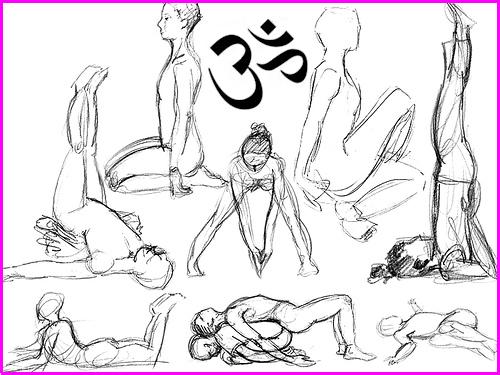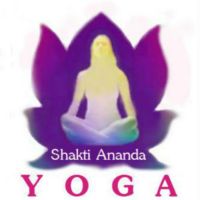
Hatha Yoga – Complete System
Salutations to the glorious primal Guru, Sri Adinath who brought forth the teachings of yoga; and as hatha yoga which shines forth as a stairway for those who wish to ascend to the highest stage of yoga, known as raja yoga. Shiva Adinath is considered to be the primordial Guru, who is Jyoti-Svarupa (a form of transcendental light). The Guru is considered to be a manifestation of Shiva. The Guru is the embodiment of Power (Shakti) and Supreme Consciousness (Shiva).
Hatha Yoga is a branch of Raja Yoga. It is about more than just practicing the yoga postures (asanas). It is important to practice the different techniques of the system with the highest goal in heart and mind; union with God/Goddess. Hatha Yoga and Kundalini Yoga are similar and are both branches of Raja Yoga of Patanjali.
The Hatha Yoga Pradipika, the most authoritative scripture of Hatha Yoga, opens by telling us that for those who cannot practice Raja Yoga, it is better that they practice Hatha Yoga. Raja yoga involves control and discipline with the practice of meditation. Those who cannot control their mind successfully, cannot meditate successfully. They need to practice Hatha Yoga which will help them to progress further.
The purpose of Hatha Yoga practice is to enable the practitioner to control his mind through techniques aimed at controlling the physical body and the prana (vital force).
The Hatha Yoga Pradipika and other Hatha Yoga scriptures go to great lengths to explain the health benefits and therapeutic nature of the different practices. Hatha Yoga is practiced as a wholistic spiritual lifestyle as well as a specific healing method.
The word hatha is made up of two sanskrit words “ha” and “tha” – symbolizing the sun and the moon respectively. They represent the twin energies which exist in everything. Hatha represents the forces of the mind and the prana which constitutes the body and the mind.
Moon represents the mental energy of chitta (mind), while the sun represents the pranic force which is more dynamic and active. The two create the extremities – introversion and extroversion respectively.
Practice of Hatha Yoga enables the fluctuation between these two energies to become harmonized and unified into one single force. If these two separate flowing energies, prana and chitta are unified, there emerges a suitable condition for the arise of kundalini shakti (spiritual energy).
Hatha Yoga is the process of establishing perfect physical, mental, emotional, and psychic (spiritual) equilibrium by manipulating the energies of the body. For this, the physical body has to be refined and strengthened so it can act as a medium for the higher energy (cosmic force) to pass through. Traditionally, Hatha Yoga consisted only of six kriyas, shatkarmas namely, dhauti, basti, neti, trataka, kapalabhathi, nauli. Later, Hatha Yoga came to include asanas, pranayama, mudra and bandha.
Through the practice of Hatha Yoga, one can regulate the bodily secretions, hormones, breath, brainwaves, and prana; which ultimately control the fluctuations of mind and make it harmonious.
Hatha Yoga is a tantric discipline that aims at awakening and raising the kundalini sakti. Kundalini shakti is that infinite divine power that lies at the bottom of the spine. This awakening is done by uniting (yoga) ha (the sun, active, heating energy) with tha (the moon, passive, cooling energy).
There are two phases in the process of awakening the kundalini shakti: purification and awakening. Of the two, purification should be the main object of focus for the majority of aspirants. It is important to be careful in awaking the kundalini shakti before the purification of the physical body and the subtle body has been accomplished. The kundalini shakti will naturally awaken when it is the proper time. Forcing the experience will bring discomfort of too much heat (prana) in the spine and imbalances can occur in the subtle body causing mental and emotional imbalance. It is advisable to seek guidance with your Guru in this process.
Hatha Yoga is a full spiritual development system. It is important to study Hatha yoga as a complete course; not to just isolate one or two techniques out of this system.
Hatha Yoga is known as the branch of Raja Yoga that unites pairs of opposites referring to the positive (sun) and negative (moon) currents in the system. It concentrates on the third (asana) and fourth (pranayama) steps in the Eight Limbs of Ashtanga Yoga.
Hatha Yoga is a form of yoga that emphasizes postures and breath awareness for the purpose of steadying the mind & body and gaining control over prana (vital energy). These practices bring peace to the restless mind and develop flexibility and inner strength for the body. Hatha Yoga is the groundwork for spiritual progress.
> The Eight Limbs of Yoga
Patanjali ‘s yoga, called Astanga Yoga which consists of Eight Limbs.
These are: Yama, Niyama, Asana, Pranayama, Pratyahara, Dharana, Dhyana and Samadhi.
Hatha Yoga and Kundalini Yoga
“Patanjali touched upon certain aspects of Kundalini Yoga in describing different types of concentration. Concentration upon the inner Chakras has also be casually hinted at in Raja Yoga. But, the reason why Patanjali does not make mention of Kundalini is because Raja Yoga is essentially a Yoga of mental discipline. Raja Yoga is the inner Yoga of Dharana, Dhyana and Samadhi; and it is concerned mainly in training the mind, in disciplining the mind, to become a powerful instrument to pierce beyond the veil of creativity and duality and go into the realm of non-dual consciousness, of absolute consciousness. This is the whole attempt of Raja Yoga. And Patanjali is not trying to do it through the power of the Kundalini; he is trying to do it through the power of a purified and concentrated mind. And so he does not mention Kundalini. Patanjali’s instrument is not Shakti. His instrument is the concentrated mind. That is the reason. Kundalini Yoga is Hatha Yoga. Hatha Yoga is Kundalini Yoga. The name “Hatha Yoga” does not imply merely Asanas and Pranayamas. Hatha Yoga, properly interpreted, is actually Kundalini Yoga. Hatha Yoga is the process or technique of controlling the solar and the lunar Pranic currents, the right and left Pranic currents, and uniting them through various Bandhas, and taking the unified Pranic current towards the Muladhara Chakra at the base of the spine, and through various Bandhas and various Pranayamas, trying to make this united Prana that is now directed powerfully towards the base of the spine to somehow or the other activate the sleeping power of Kundalini; and, as a further step, even trying to gradually force the Kundalini through the central channel of the Sushumna Nadi. So, Hatha Yoga is a very, very scientific and exact process. It is a different technique altogether. It is treated in Siva Samhita, Gheranda Samhita, Hatha Yoga Pradipika and such other texts. To some extent, Jnanesvar also, in his commentary on the Sixth Chapter of the Srimad Bhagavad Gita, brings in these techniques. But, Patanjali, in his Raja Yoga, does not mention about Kundalini, because Raja Yoga has no concern with Kundalini. Its main approach, main technique, is to bring about the higher superconscious state through meditation, through the power of the concentrated mind, and not through the force of the occult sleeping power.” Reference: Yoga-Age Philosophy/Psychology
> The Hatha Yoga Pradipika – English Translation
An ancient scripture which explains the health benefits of the different practices.
“The Haṭha Yoga Pradīpikā (Sanskrit: haṭhayōgapradīpikā, हठयोगप्रदीपिका) is a classic Sanskrit manual on hatha yoga, written by Svāmi Svātmārāma, a disciple of Swami Gorakhnath. Said to be the oldest surviving text on hatha yoga, it is one of the three classic texts of hatha yoga, the other two being the Gheranda Samhita and the Shiva Samhita. A fourth major text, written at a later date by SrinivasabhattaMahayogaindra, is the Hatharatnavali.”
From Wikipedia, the free encyclopedia
